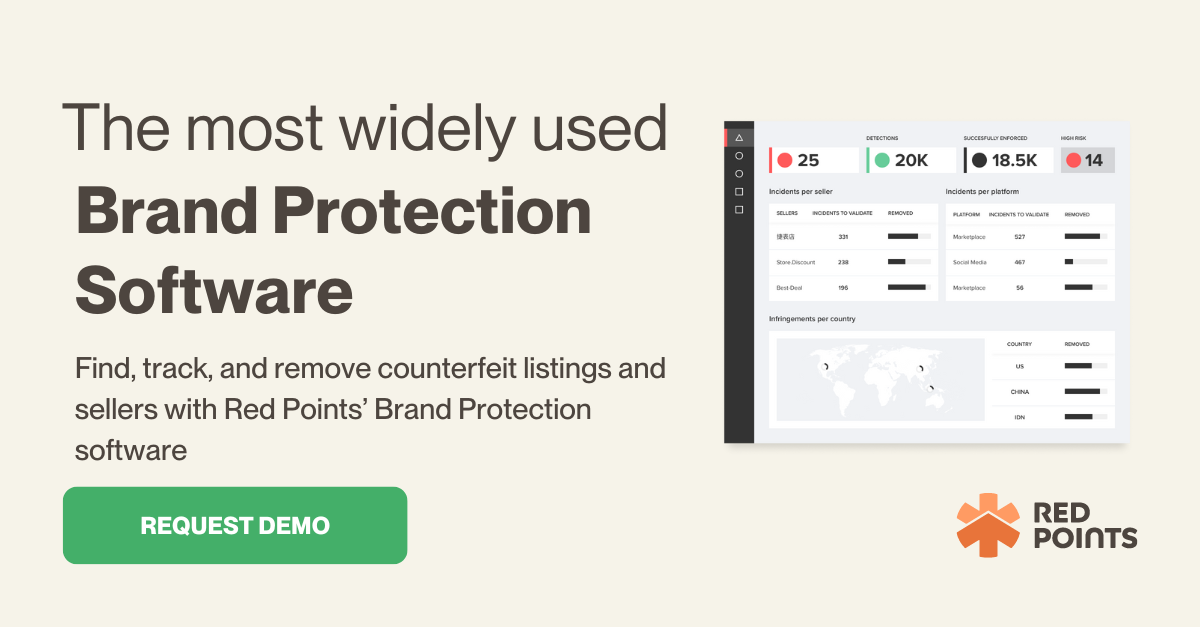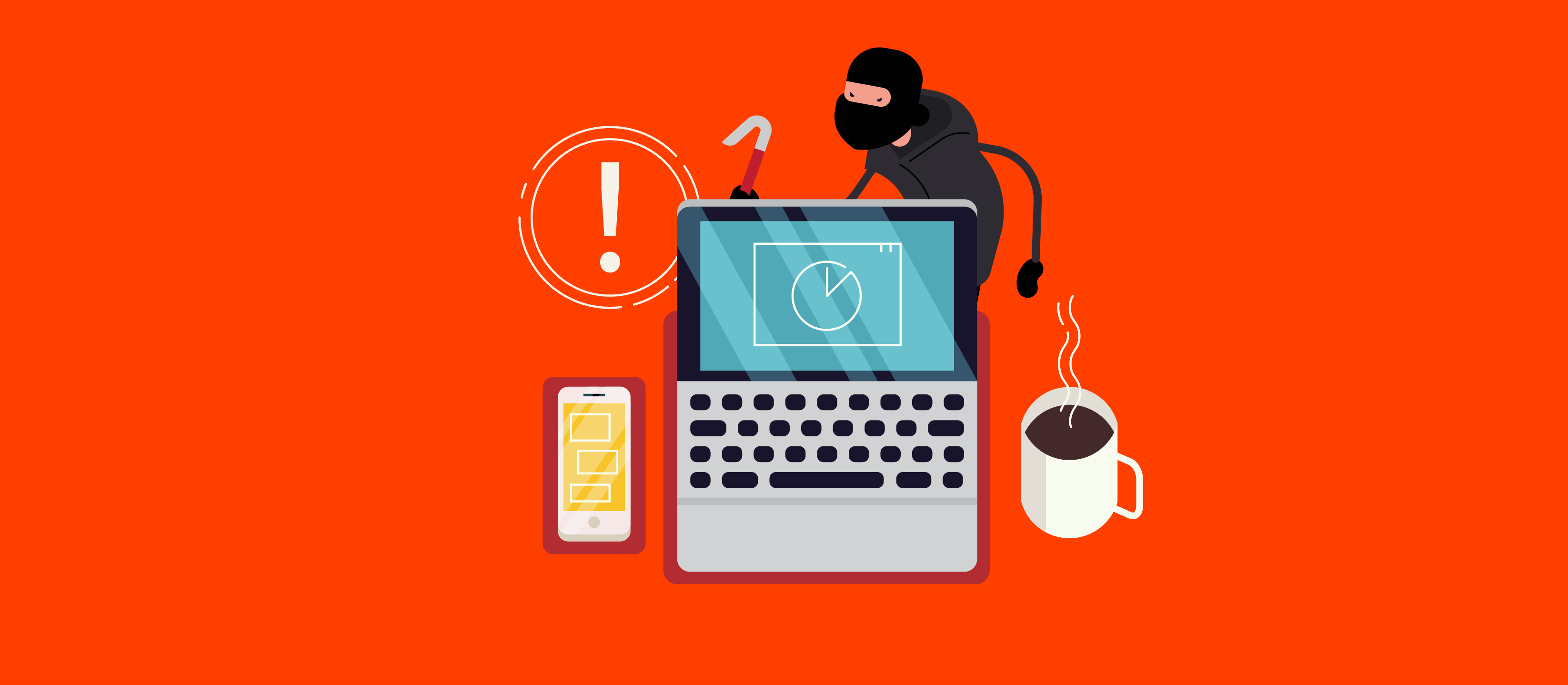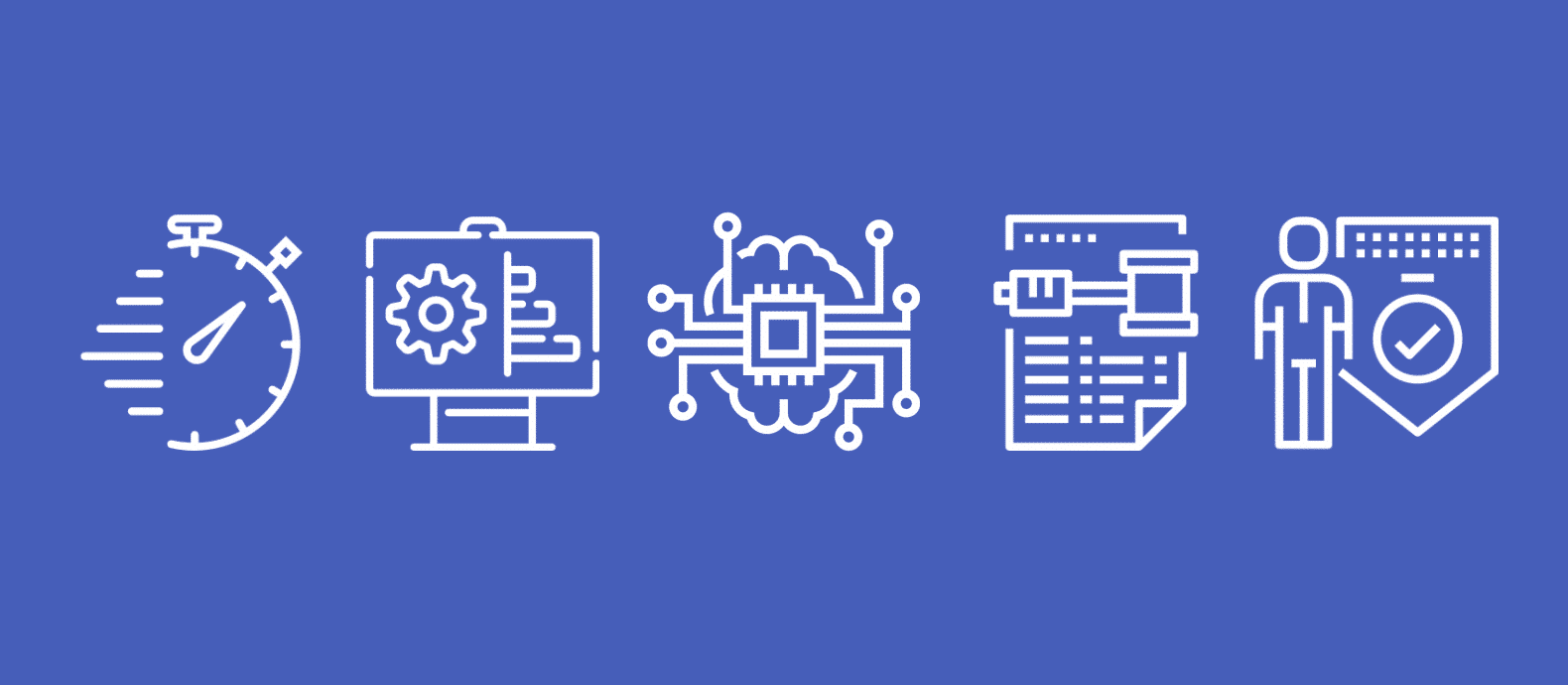AI has revolutionized many sectors, it’s made life easier for professionals in finance, tech, and the creative world.
Yet, the convenience it creates comes at a cost.
In this article, we’ll go over the evolving landscape of cybercrime and how it has affected brands. We outline specific methods cybercriminals take to break into secure information systems and provide solutions to help protect your brand from contributing to the $8 trillion lost to cybercrime annually.

How does AI affect the fight against cybercrime?
AI has revolutionized many sectors, it’s made life easier for professionals in finance, tech, and the creative world.
But in the world of cybersecurity, artificial intelligence has proven itself to be a double-edged sword. The use of AI in cybercrime has evolved the complexity of malicious attacks from simple automated tasks to complex operations that adapt and mimic human decision-making. It allows attackers to create more complex phishing campaigns, faster domain squatting scripts, and more sophisticated replicas of products. These attacks would lead to revenue loss and a damaged brand reputation if left unattended.
Businesses have turned to artificial intelligence as a critical component in their cybersecurity arsenals. By allowing for large dataset analytics, AI can recognize patterns at lightning speed and consistently learn from mistakes, making it an invaluable tool for defending against sophisticated cyber threats.
Prescriptive analytics, in particular, can predict future trends, identify potentially malicious attacks, and suggest actions and strategies that will influence desired outcomes. By taking the necessary steps to protect your brand from AI-powered cybercrime, companies from any industry can improve their bottom line and elevate their brand reputation.
11 methods cybercriminals are using AI
Bad actors can target every category you can think of, even if the majority of your business is conducted offline. Whether you’re in pharmaceuticals, e-commerce, or solar panels, malicious parties can still use a range of tactics to defraud your clients and create fake websites.
Counterfeiting
Cybercriminals are using artificial intelligence for counterfeiting through a variety of means.
Products from an online marketplace could be scanned, analyzed, and replicated – they could even suggest improvements or variations to the original design.
AI can also analyze market sentiment to identify popular products using natural language processing. By monitoring social media, online marketplaces, and other digital platforms to gauge consumer demand, businesses can dive deeper into the analytics and create better products based on real customer feedback.
As an example of the impact of counterfeiting on businesses, the well-known board game CATAN hit its biggest year of sales in 2020 after removing a quarter of a million worth of fake games from the market with the help of AI technology.
Piracy
Piracy and copyright infringement can be carried out via multiple methods, including:
- Unauthorized reproduction,
- Digital piracy, and
- Online streaming and sharing
AI can scan the internet for digital content like movies, music, and software and replicate them on illegal sharing platforms. AI-driven bots can automate the process of uploading and distributing pirated content.
This holds even for use cases where AI means no harm.
Generative AI models are trained by ingesting large datasets comprising nearly everything online. Theoretically, a user could issue a prompt like “Write me a song that sounds like Kanye West with an upbeat tempo.” In doing so, generative AI treads in the gray area of copyright content.
Trademark infringement
Harvard explains that an infringement occurs when an existing logo, phrase, or other identifying feature of a product or packaging is likely to cause consumer confusion about the source of those goods.
AI facilitates trademark infringement by generating products or services that subtly infringe on existing trademarks. Counterfeiters can analyze and create logos or branding materials eerily similar to the original content, leading to consumer confusion and dilution.
With predictive and prescriptive analytics, AI algorithms may take this a step further and offer strategies to stay ahead of the curve. This might include carefully altering the degree of similarity to avoid detection or legal repercussions.
Domain squatting
Cybercriminals have been using artificial intelligence (AI) to simplify the practice of domain squatting and make the process either more efficient or challenging for users to combat. This malpractice involves registering an existing domain name to profit from a similar domain’s goodwill.
For example, a company may register for instagrram.com instead of Instagram.com to phish and target those who wish to access Instagram.com.
Artificial Intelligence can be leveraged to find domain names that are more popular and more likely to be accessed based on current trends, popular keywords, upcoming events, and new product launches. AI algorithms can also generate a vast array of domain names that include common typos and misspellings of domain names, including existing alphabets with similar characters to the Latin alphabet.
Fake websites
Building on our last point of domain squatting, AI tools can be used to set up fake websites on top of these domains quickly. Because of their generative capabilities, these tools can theoretically mimic the look and feel of a legitimate brand’s site.
AI algorithms can analyze a legitimate website’s layout, design elements, and visual style by conducting a visual analysis. From here, it could scrape the content, including text, images, and videos, to make a text-based version.
In doing so, a malicious actor could theoretically create promotional material or product promotion pages for items that don’t exist. All promotional material, of course, would look and read exactly like the copied company.
Once these websites are published, AI tools can also be leveraged to optimize the online presence of these products and organically sell to a customer base at a position relative to or above the genuine entity.
Social media impersonation
With generative AI, malicious actors could create fake social media profiles that impersonate real brands. By appearing authoritative, these profiles can spread misinformation, scam consumers, and harm the brand’s overall reputation.
Because of its ability to read and respond to text, AI algorithms could be leveraged to respond to and curate posts given to a page. Whether scraping the website or generating an original image using gen AI, AI can help cyber attackers with social media impersonation.
Ad fraud
Managing advertisements online is naturally an extremely challenging task. AI algorithms can simulate human interaction with sophisticated ad fraud schemes.
Some bots can interact with ads across websites and platforms, giving the data collector a false idea of high traffic and engagement. This is a common practice done by malicious affiliate marketers, where they manipulate the amount of conversions and leads that they create by employing generative AI to fill out forms or sign up for services. This generates fraudulent commissions.
Some bots can also be used to inject ads into websites without the knowledge or consent of the website owner by finding vulnerabilities and weaknesses in the website’s architecture. When paired with the ability to analyze the user’s interests and browsing, AI can specifically target a demographic to increase the effectiveness of fraud.
Intellectual property theft
Intellectual property theft is defined as the act of stealing or illegally using another entity’s creation without permission. This includes confidential and trademarked information such as patents, trade secrets, internal documents, and copyrights.
AI tools can analyze market trends, patents, research papers, and other public records to uncover valuable IP assets within a company.
Artificial intelligence is a ruthless perpetual technology that mimics the actions of hackers 24 hours a day, 7 days a week. Whether it’s via brute force, ransomware, phishing, or scripting, AI can be leveraged to automate the process of searching for vulnerabilities via automated hacking or cyber espionage, facilitating unauthorized access to protected systems where intellectual properties (IP) are stored.
From here, AI algorithms can sift through vast amounts of data to identify valuable intellectual property, such as innovative product designs, materials, and internal functionality. Once these have been identified, AI can then be used to deconstruct the product and outline all the possible ways something could be built.
Deepfakes
Deepfakes use advanced AI algorithms to superimpose and edit existing images and videos onto source images or videos using machine learning, neural networks, and generative adversarial networks (GANs).
AI algorithms can create convincing video and audio fakes that imitate and mimic a person’s likeness and voice with high accuracy. It can be used to make it appear as though an individual is saying or doing things that they never physically did.
Cybercriminals can use deepfakes to impersonate people in authority positions with videos or audio recordings. They can then use these items to instruct individuals to transfer funds, send emails, or even disclose sensitive information. Whether or not the employee follows through on that request is the result of your company’s data sensitivity training.
DDoS Attacks
Distributed Denial of Service attacks involve overwhelming a targeted server, service, and network with a flood of internet traffic, rendering it inaccessible to legitimate users.
DDoS Attacks interrupt the services of your businesses. It can halt online transactions, communications, and other critical business operations. This results in financial loss and reputational damage.
AI algorithms can scan the internet and identify potentially vulnerable targets, such as websites with known security weaknesses or networks with limited capacity. From there, AI algorithms can then manage large networks of botnets more efficiently, determining optimal strategies for deploying these resources to maximize the attack’s impact.
Some AI-powered botnets can even go so far as self-organization; autonomously recruiting new bots and coordinating attacks without direct input from the attacker.
How is AI combatting cybercrime?
As we mentioned before, artificial intelligence is a double-edged sword. Though malicious actors have been leveraging AI to create more powerful attacks, artificial intelligence has an increasingly crucial role in combatting cybercrime. With AI being so dynamic and adaptive, it’s proven itself to be a vital component in responding to the evolving challenges in cybersecurity.
At Red Points, we use AI to scale our brand protection efforts, showcasing the effective use of this technology to protect over 1,300 organizations globally.
Here are more specific cases where AI can combat the most common forms of cybercrime:
- Threat detection and analytics
Artificial Intelligence can be used for anomaly detection, behavioral analytics, and prescriptive analysis. AI can predict potential vulnerabilities and attack vectors by analyzing your internal infrastructure and what’s available to cyber attackers. This allows for proactive defense measures.
For example, some AI algorithms are designed to scan online marketplaces and identify counterfeit products. AI algorithms analyze thousands of images, reviews, and product descriptions to spot and flag potential counterfeits. Once identified, the listings could be flagged for investigation or removal.
- Automated response to threats
With AI, security teams can provide 24/7 organizational support with fast response times. Often, they can do it even without the need for human intervention. AI can automate the response to cyber threats based on the nature and severity of the attack, including isolating affected systems or blocking malicious IP addresses. Prescriptive analytics allow businesses to even go so far as to suggest possible protection methods for future prevention.
- Phishing detection and prevention
AI tools can analyze email content, metadata, and sender profiles to identify potential phishing emails and malicious websites. AI tools can achieve this via Natural Language Processing, a processing technique primarily used to analyze unstructured data by examining linguistic features and patterns.
- Counterfeiting removal
In a collaborative effort with Red Points and Puma, the global sportswear brand, AI technology was instrumental in addressing counterfeit and infringement challenges. This partnership led to the takedown of over 760,000 counterfeit products from the online marketplace, thereby safeguarding the brand’s intellectual property and market reputation.
What’s next
AI’s contribution to cybersecurity is substantial and multifaceted, encompassing everything from advanced threat detection to proactive defense strategies. Its role in safeguarding against, identifying, and responding to cyber threats underscores the technology’s growing importance in today’s digital landscape. For more information on how we leverage AI to protect your brand and customers, book a 15-minute consultation and see how we can help.











